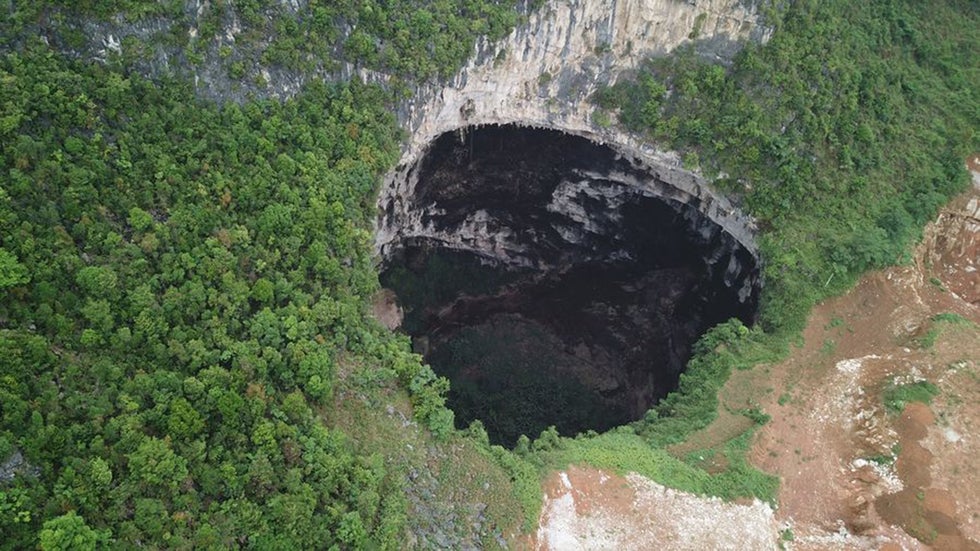A new neighbor has been uncovered under an extensive forest in the Guangxi Zhuang Autonomous Region of China. This gigantic sinkhole is about 1004 feet long and 492 feet wide, but this discovery is of no surprise to the international experts on caves because China already has a large number of giant caves and sinkholes present in other regions, so this new discovery has just added to the list of other existing sinkholes. The executive director of the National Cave and Karst Research Institute (NCKRI) in the US, and an international expert on caves, George Veni, stated that the formation process of these karst landscapes is due to the dissipation of underpinning bedrock.

What happens is that the rain, which has a pH of “slightly acidic,” when it falls on the bushes and valleys, starts to accumulate carbon dioxide, making itself more acidic. When it runs through the fractures and bangs in the bedrock, then due to its acidic nature, it keeps on opening as well as expanding the small cracks into large tunnels and chasms, thereby forming these giant sinkholes. Veni said, “So, in China, you have this incredibly visually spectacular karst with enormous sinkholes and giant cave entrances and so forth. In other parts of the world, you walk out onto the karst and you really don’t notice anything. Sinkholes might be quite subdued, only a meter or two in diameter. Cave entrances might be very small, so you have to squeeze your way into them. “
Guangxi has received an honorary designation by UNESCO as a world heritage site for being the most popular region for the discovery and formation of karsts. However, these sinkholes have a lot of practical purposes. Generally speaking, they can support life and they can find refuge in life as well. These big caves have the possibility of containing species that have not been discovered yet. Moreover, the most important thing to consider is that the “Karst aquifers” are the primary source for the provision of water to roughly 700 million people worldwide if they are being utilized as water reservoirs. They can also be used to preserve our solid waste rather than cause water or land pollution and damage aquatic life.
As said by Veni, “Karst aquifers are the only types of aquifers that you can pollute with solid waste.” I’ve pulled car batteries and car bodies and barrels of God-knows-what and bottles of God-knows-what out of the active cave stream.” Unquestionably, they have a lot of daily life applications if they are used efficiently.



